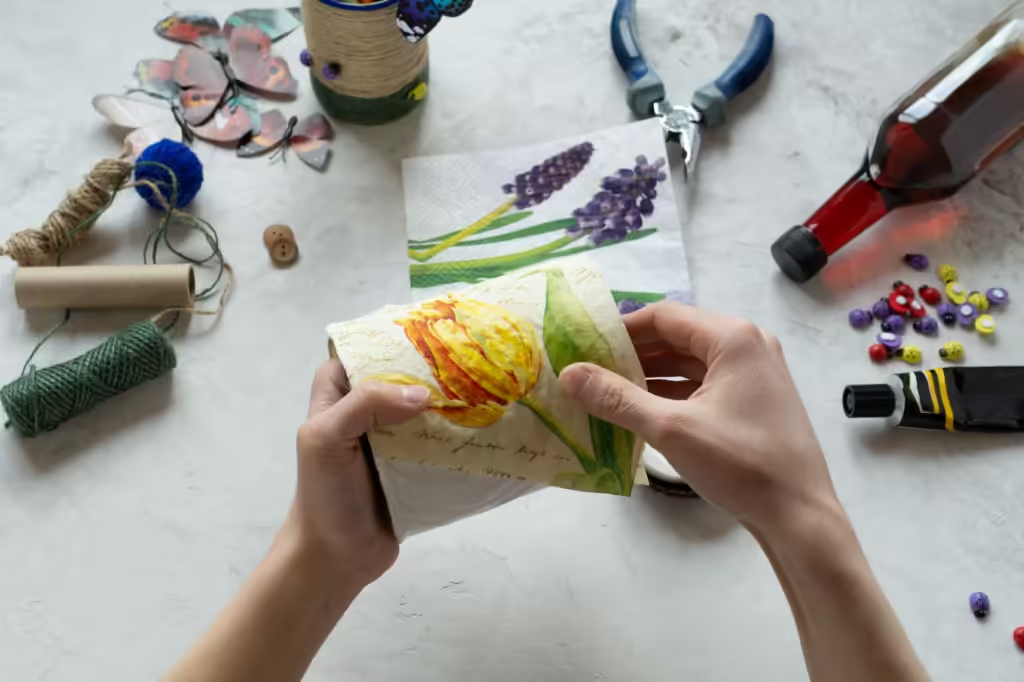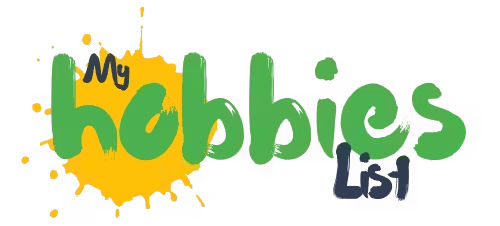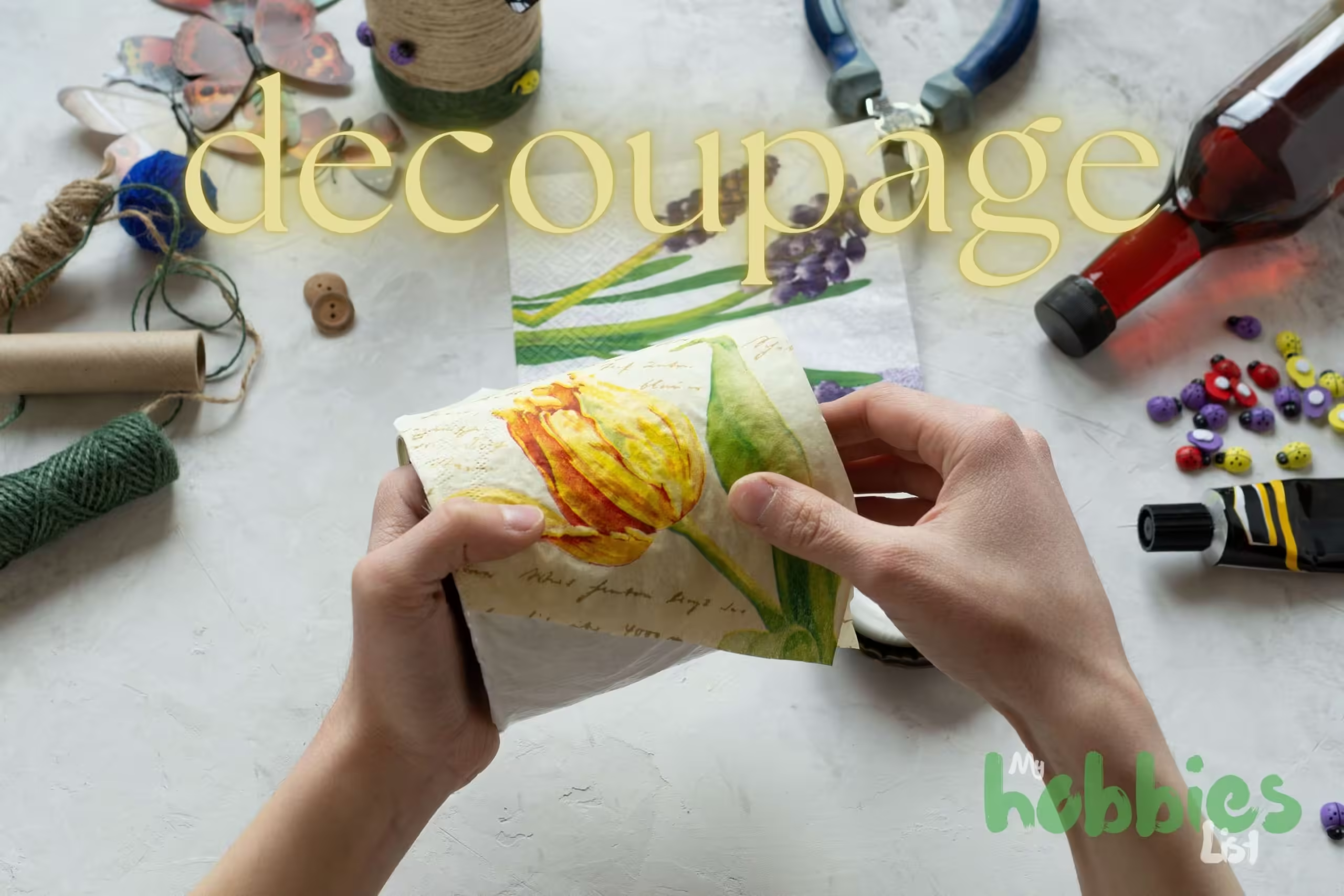Decoupage: Transform Everyday Objects with This Creative Hobby
Decoupage (or découpage) is a decorative art technique that involves using paper images or patterns to decorate objects. You glue the paper onto a surface, then seal it with varnish or glue to create a long-lasting, painted look. This technique allows you to breathe new life into old furniture, boxes, plates, and other items, creating unique, personalized pieces.
The Origins
Decoupage traces its roots back to 12th-century China, but it became popular in Europe during the 17th and 18th centuries, especially among the nobility as a luxurious decorative form. Over time, the technique became accessible to everyone, and today, it’s widely used in home decor and DIY projects.
What Do You Need for Decoupage?
To get started with this technique, you’ll need some basic supplies: decoupage glue (or a combination of glue and varnish), paper (napkins, rice paper, or special decoupage paper), and the object you want to decorate. It’s also handy to have brushes, scissors, and smoothing tools to remove any bubbles or wrinkles.

Decoupage Ideas: Unleash Your Creativity!
Looking for some inspiration? Here are a few decoupage ideas to get your creative juices flowing. Try decorating an old wooden box, giving it a vintage look with floral napkins, or add a modern twist to a simple plate with geometric patterns. You can also upcycle old furniture by covering drawers or tabletops with artistic paper designs. The possibilities are endless, and with a little imagination, you can turn almost anything into a unique masterpiece!
The Pros and Cons of Decoupage
Pros:
- A creative way to turn any object into something unique and personal.
- It’s an eco-friendly hobby that encourages upcycling and giving new life to old items.
- It can be a relaxing and stress-relieving activity.
- If you get good at it, you can even sell your creations on platforms like Etsy or through your own shop!
Cons:
- Some projects can be time-consuming and require practice to get the perfect finish.
- Because of the glue and varnish, you’ll need a well-ventilated workspace, especially if you’re sensitive to fumes.
How Hard Is Decoupage?
Not hard at all! The basics of this method are easy to learn, and there are plenty of beginner projects that can help you get started quickly. More complex and detailed projects take time and patience, but with practice, you’ll be able to decoupage on various surfaces, like clay. Speaking of which, we’ve covered clay crafting before—check it out here! (internal reference)
Step-by-Step Decoupage Tutorial
Preparing the Surface
The first step is prepping your surface to ensure a lasting, beautiful result. Start by cleaning the item to remove dust and grime. If the surface is rough or uneven, sand it down with fine sandpaper to create a smooth base. Wipe the surface with a damp cloth to remove any remaining dust, then wait for it to dry.
Choosing and Preparing the Paper
The type and design of the paper you choose for decoupage will define the final look. You can use napkins, newspaper, or special paper. Make sure to cut the paper to the right size before applying it to the surface. If you’re using napkins, peel away the extra layers and only use the top, patterned layer. It’s also helpful to arrange the paper on the surface beforehand to visualize your final design.
Applying the Glue
Using a brush, apply a thin layer of decoupage glue to the surface. Carefully place the paper on the glue, smoothing it out to remove any air bubbles or wrinkles. Use a soft brush or smoothing tool for the best results. If you’re layering multiple designs, wait for each layer to dry before adding the next.
Sealing the Design
Once the glue has completely dried, it’s time to seal your design. Apply a few layers of varnish to protect the paper and give it a durable finish. You can choose a glossy, matte, or satin varnish, depending on the look you want to achieve. Make sure to let each coat dry before applying the next.
Advanced Decoupage Techniques
For those looking to take their decoupage skills to the next level, you can mention advanced techniques such as:
Crackle Finish: Adding a crackle medium between layers of paint and decoupage can give your piece a charming, antique appearance.
3D Decoupage: This involves layering multiple paper cutouts to create a three-dimensional effect on your project.
Distressing: By sanding down parts of the decoupage after applying it, you can create a vintage or aged look.
Common Mistakes and How to Avoid Them
Adding a section on common mistakes could help beginners feel more confident:
- Too much glue: Applying too much glue can make the paper wrinkle. Use thin, even layers for best results.
- Not smoothing out the paper: Air bubbles or wrinkles can form if you don’t smooth out the paper properly. Use a soft brush or roller to gently flatten the paper.
- Skipping the sealing step: Without varnish, your decoupage project won’t be as durable. Always apply a protective top coat to finish the job
In Summary
Decoupage is a versatile and enjoyable hobby that lets you create custom, personalized decor items by hand. If you’re looking to explore the art of paper decoration, decoupage is the perfect hobby to try!

